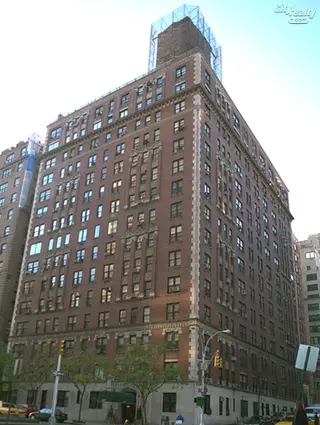 Carter Horsley
Carter HorsleyDec 23, 2011
Carter's Review
A typical Park Avenue apartment building of its era, this 16-story building at 1070 Park Avenue on the southwest corner at 88th Street was completed in 1928 and designed by Schwartz & Gross, one of the most prolific designers of luxury apartment buildings of the period.
The architects' other Park Avenue buildings include 470, 525, 885, 888, 910, 911, 930, 941, 970, 983, 1045, 1095, 1125 and 1165.
The building was converted to a cooperative in 1951 and has 86 apartments. It originally had 72 apartments when the Tishman Realty & Construction Company, which converted it, acquired it from the estate of William Waldorf Astor that had bought it for a cash offer of $975,000. In 1947, the City Bank Farmers Trust Company. It was erected by the Bricken Construction Company and had been sold in 1940 by Realty Associates Inc. and the Edgar A. Levy interests to the Wickford Corporation, owners of the adjoining apartment building 1060 Park Avenue.
Bottom Line
One of the finer, full-service pre-war buildings in Carnegie Hill with good layouts.
Description
According to “Carnegie Hill Architectural Guide” published by Carnegie Hill Neighbors, “the exuberant detailing of this sixteen-story building can be broadly characterized as neo-Venetian Gothic.”
“Presiding over the entryway, between the corbelled hood moldings and double-ogee arch, is a mythical creature spewing vines. More vines are seen in the glass-and-wrought-iron doors. Banking the entry are pinnacled iron terns, niches and pinnacled piers. Above the doorway is a corbelled frieze of mini-lancet arches. More friezes, each bearing a variation of an arch shape, ca be seen above the third, twelfth and thirteenth stories. Perhaps the most dramatic façade features are the three-story-high window bays at the fifth and ninth stories, echoed in two-story versions at the crown. Triple ogee arches of carved stone enclose trefoil arches, brick pilasters flanking the nine windows are topped with stone pinnacles and rest on carved brackets. Carved limestone plaques separate windows vertically at each story. Not to be overlooked are the limestone quoins edge with rope moldings, and the water-tower with ogee-arched windows, lancet-arched brickwork and a shaped parapet.
The building has a canopied entrance flanked by sconces and sidewalk landscaped and stone columns that rise slightly above a stringcourse over the first story.
The building permits window air-conditioners.
Amenities
The building has a doorman, a concierge, a gym, a basketball court, a bicycle room, a live-in superintendent and a laundry. It is also pet friendly.
Apartments
Apartment 4E is a two-bedroom unit with a 28-foot-long entrance hall that leads to a 25-foot-long living room with a fireplace that leads to a 14-foot-long dining room next to a breakfast room, a 16-foot-long kitchen and a 9-foot-long maid’s room.
Apartment 2B is a three-bedroom unit with a 12-foot-wide entry foyer that leads to a 25-foot-long living room with a fireplace and a 19-foot-long dining room next to a 15-foot-long kitchen and an 8-foot-long laundry room.
Apartment 3D is a two-bedroom unit with a 15-foot-wide entrance gallery that leads to a 23-fooot-long living room with a wood-burning fireplace and a 20-foot-long dining room next to a 13-foot-long pantry, an 8-foot-square den and a 14-foot-long eat-in kitchen.
Apartment 11Cis a two-bedroom unit with a 23-foot-long entrance gallery that leads to a 23-foot-wide living room with fireplace and a 21-foot-long dining room next to a 18-foot-long kitchen with a breakfast area and a 8-foot-long staff room.
Apartments have maids’ rooms.
Location
It is located at the heart of the Carnegie Hill neighborhood and is close to public transportation and shopping.
The building is convenient to many museums and educational institutions.

- Co-op built in 1930
- 1 apartment currently for sale ($2.4M)
- Located in Carnegie Hill
- 86 total apartments 86 total apartments
- 10 recent sales ($220K to $6.3M)
- Doorman
- Pets Allowed
 6sqft delivers the latest on real estate, architecture, and design, straight from New York City.
6sqft delivers the latest on real estate, architecture, and design, straight from New York City.
